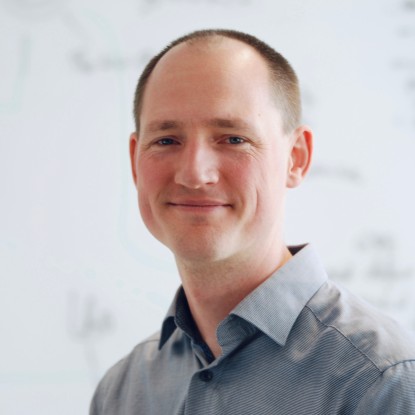Our primary goal is to bring forth the photoelectrochemical conversion of solar radiation into a chemical fuel for energy storage, transportation and use, which is the basis for an effective, safe and economically feasible renewable energy economy. In our systems the solar light is absorbed by solid state inorganic materials to generate charge carriers, which are then transported to the interface to promote the splitting of water into its components hydrogen and oxygen. In the laboratory efficiencies greater than 18 % have already been demonstrated, but the used devices are by far too expensive to have any future industrial prospect. Other structures, which have been investigated previously, have either too low efficiencies or are unstable in the electrolyte solution. Therefore our research concentrates on the effective coupling of several successive elementary steps: (i) to produce cheap and stable thin film absorbers from abundant materials to achieve an efficient light absorption and charge separation; (ii) to engineer the topmost layers of the absorber to allow for an effective electronic coupling between the solid absorber and the liquid electrolyte; and (iii) to optimize metal nanoparticles as highly efficient catalysts for the charge transport between the absorber and the reacting redox species in the solution.
The requirements cannot be met without a detailed analysis of the elementary processes involved at the solid-liquid-interface as well as of the materials and devices used for the successful implementation. Therefore, the group operates the most recent experimental synthesis and characterization techniques at the DAISY-FUN lab at TU Darmstadt and an additional experimental workstation at the Berlin advanced light source Bessy II in cooperation with the HZB and the TU Cottbus.
The group supports research of other members of the CSI by providing expertise and experimental facilities (DAISY-FUN ) for chemically or physically active surface coatings and for interface characterization techniques.



